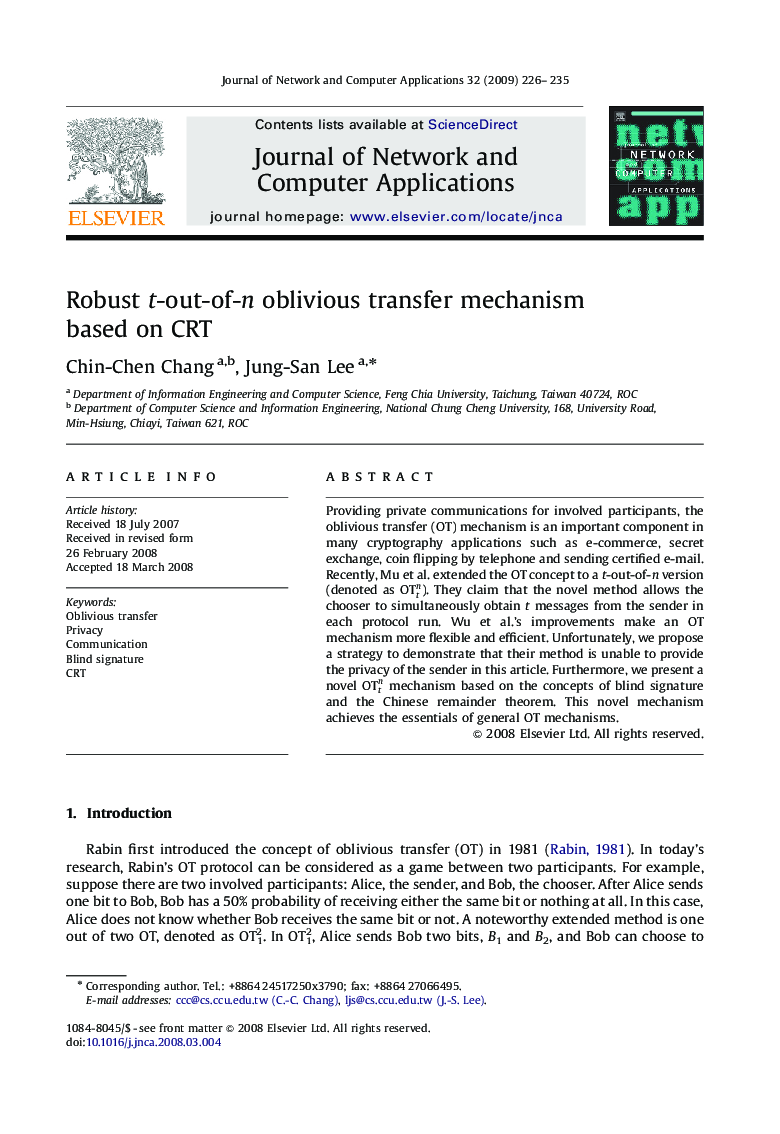| Article ID | Journal | Published Year | Pages | File Type |
|---|---|---|---|---|
| 457591 | Journal of Network and Computer Applications | 2009 | 10 Pages |
Providing private communications for involved participants, the oblivious transfer (OT) mechanism is an important component in many cryptography applications such as e-commerce, secret exchange, coin flipping by telephone and sending certified e-mail. Recently, Mu et al. extended the OT concept to a t-out-of-n version (denoted as OTtn). They claim that the novel method allows the chooser to simultaneously obtain t messages from the sender in each protocol run. Wu et al.'s improvements make an OT mechanism more flexible and efficient. Unfortunately, we propose a strategy to demonstrate that their method is unable to provide the privacy of the sender in this article. Furthermore, we present a novel OTtn mechanism based on the concepts of blind signature and the Chinese remainder theorem. This novel mechanism achieves the essentials of general OT mechanisms.
